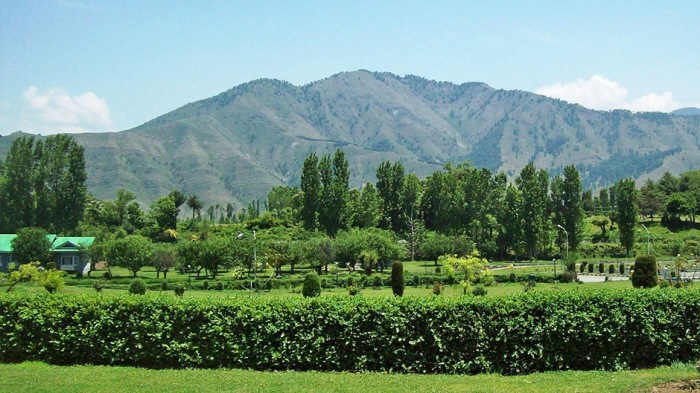
Kokernag is a sub-district town and a notified area committee in Breng Valley (The Golden Crown of Kashmir), Anantnag districtin the Indian administered state of Jammu & Kashmir. The etymology of the word ‘Kokernag’ is controversial and there are various theories and none has any conclusive historical proof. As per one such theory Koker means ‘fowl’ and nag means ‘serpent’. The spring gushes out of the base of a thickly wooded hill from where it divides into channels, which resembles to the claw-foot of a hen, hence its name. The other theory is that the word Kokernag originates from Koh (Mountain) kan (from or under) nag (spring). Kokernag is at the height of approx. 2,000 m above sea level. Place is known for gardens, largest fresh water springs in Kashmir and for its largest rainbow trout hatchery in north India. Towns and village situated around Kokernag are Bindoo, Zalangam, Bidder, Wangam, Hangalgund,Nagam, Mukhdampora Sagam,Duksum, Soaf Shali etc. Kokernag has been mentioned in Ain Akbari, where in it has been mentioned that the water of Kokernag satisfies both hunger and thirst and it is also a remedy for indigestion.

Basically, the nickname or second name of Kokernag is Breng Kokernag, the name given by Shiekh ul Alam, poet and scholar. He said “” kokernag breng chu sunsund preng”” which means that “”kekernag is Golden crown of kashmir”” means a precious thing. Kokernag is a collection of many small springs and their collective appearance resembles to the claws of a koker (cock). Kokernag is the largest fresh water spring in Kashmir.
Koker means ‘fowl’ and nag means ‘Springs’. The spring gushes out of the base of a thickly wooded hill from where it divides into channels, which resembles to the claw-foot of a hen, hence its name. Kokernag is at the height of approximately 2,000 m above sea level. Place is known for gardens, largest fresh water springs in Kashmir and for its trout streams. Towns and village situated around Kokernag are Wangam, Hangalgund, Nagam, Sagam, Zalergam, Dacksum, Elakti, Soaf Shali .
It is known for its trout streams and the largest fresh water spring in Kashmir, Trout hatchery department which has constructed pools in series where in trout is reared. The total area of Kokernag is 300 Kanals of which 129 kanals is for the purpose of gardens and the rest is forest area.

















 Originally called ‘Gaurimarg’ by shepherds, its present name was given in the 16th century by Sultan Yusuf Shah, who was inspired by the sight of its grassy slopes emblazoned with wild flowers. Gulmarg was a favourite haunt of Emperor Jehangir who once collected 21 different varieties of flowers from here. Today Gulmarg is not merely a mountain resort of exceptional beauty- it also has the highest green golf course in the world, at an altitude of 2,650 m, and is the country’s premier ski resort in the winter.
Originally called ‘Gaurimarg’ by shepherds, its present name was given in the 16th century by Sultan Yusuf Shah, who was inspired by the sight of its grassy slopes emblazoned with wild flowers. Gulmarg was a favourite haunt of Emperor Jehangir who once collected 21 different varieties of flowers from here. Today Gulmarg is not merely a mountain resort of exceptional beauty- it also has the highest green golf course in the world, at an altitude of 2,650 m, and is the country’s premier ski resort in the winter.

